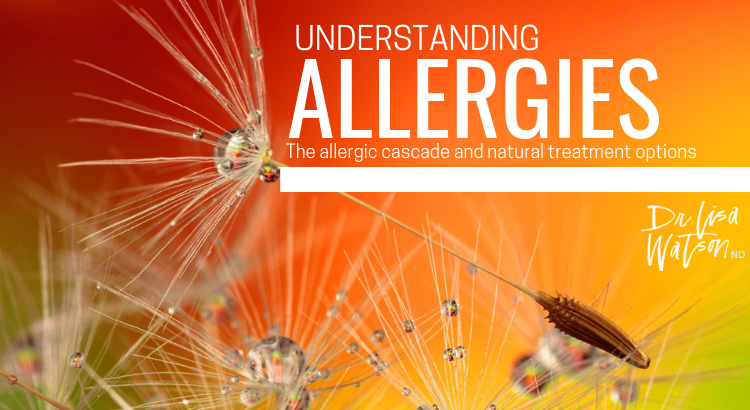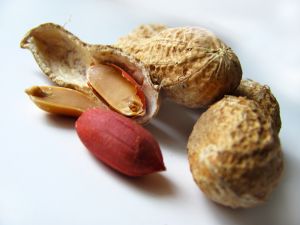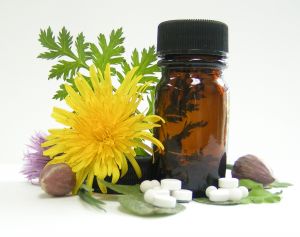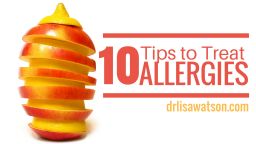
Understanding Allergies
Everyone knows someone with an allergy. Whether it be seasonal allergies like hay fever or a life-threatening allergy to peanuts a staggering 10 million Canadians suffers from seasonal, environmental or food allergies. Despite the vast difference in the cause of allergic symptoms the sequence of events in our body remains the same. With this knowledge we can target treatments at the underlying cause of allergies and minimize the allergic sequence, and decrease or eliminate symptoms.
The Allergic Sequence
A person becomes ‘allergic’ to a substance through a distinct two-step process.
Step 1 – Sensitization

During the first step of sensitization, a person begins to produce significant levels of immunoglobulin (IgE orIgG) antibodies against inhaled or ingested trigger substances (allergens). This initial step stimulates production of memory B cells. These long-lived cells will trigger future allergic responses when exposed to the allergen.
The antibodies then bind to cells in the blood (basophils) or cells in the skin, digestive tract and respiratory tract (mast cells). Once the antibody binds to these cells a person is considered ‘sensitized’.
The process of sensitization does not produce any symptoms – it is only on re-exposure to the allergen that allergic symptoms will appear.
Step 2 – Reactivity
 The second step in the allergic sequence occurs on re-exposure to the allergen and involves many distinct physiological processes.
The second step in the allergic sequence occurs on re-exposure to the allergen and involves many distinct physiological processes.
In a sensitized person exposure to the allergen causes the allergen to form a ‘bridge’ on the surface of basophils and mast cells, cross-linking the immunoglobulin antibodies. This bridging causes changes to occur in the cell, most significantly a degranulation of the mast cell or basophil.
Degranulation releases preformed allergic mediators (histamine) and begins synthesis of other allergic compounds (cytokines and eicosanoids). Release of these compounds causes inflammation and the symptoms typically associated with allergies.
| Allergic Compound | Symptoms |
| Histamine | Dilates blood vessels Redness and swelling of skin and mucous membranes Hives |
| Cytokines | Causes local influx of immune cells to affected area |
Naturopathic Treatment of Allergies
Knowing the underlying process of allergies – the allergic sequence, and the immune compounds involved in that sequence allows us to focus our treatments on the specific physiological processes and diminish or eliminate symptoms naturally.
Anti-inflammatories
In past generations the only available treatment for allergies were systemic corticosteroids. These powerful anti-inflammatories were effective but had significant severe, long-term adverse effects including bone loss, muscle weakness, weight gain, acne, osteoporosis, mood changes, elevated blood pressure and many more. Fortunately we now have research showing natural anti-inflammatories are as effective as corticosteroids and much safer for long-term use.
 Omega-3 rich fish oils are one of the most potent anti-inflammatories. They alter the fatty acid structure of cell membranes throughout the body. Having increased omega-3 fatty acids compared to omega-6 fatty acids decreases the amount of omega-6 available to be used for immune mediator production. This leads to lower levels of substances that are involved in many allergic processes, such as histamine and leukotrienes. Increase the amount of omega-3 you consume in your diet by eating cold water fish such as wild pacific salmon and mackerel. Flax seeds are also a great vegetarian source of omega-3s. Discuss with your Naturopathic Doctor whether you would also benefit from a fish oil supplement.
Omega-3 rich fish oils are one of the most potent anti-inflammatories. They alter the fatty acid structure of cell membranes throughout the body. Having increased omega-3 fatty acids compared to omega-6 fatty acids decreases the amount of omega-6 available to be used for immune mediator production. This leads to lower levels of substances that are involved in many allergic processes, such as histamine and leukotrienes. Increase the amount of omega-3 you consume in your diet by eating cold water fish such as wild pacific salmon and mackerel. Flax seeds are also a great vegetarian source of omega-3s. Discuss with your Naturopathic Doctor whether you would also benefit from a fish oil supplement.
Minimizing inflammation can also be done by avoiding specific foods or food additives. Consuming foods that we have a sensitivity to (determined by elimination diets or food sensitivity testing) creates a state of inflammation both in the digestive tract and throughout the body. This state can worsen allergy symptoms. Additionally, some foods (such as dairy and animal proteins) have been associated with increased mucus production or increased inflammation in some individuals.
Antioxidants
 Dietary antioxidants, found in fruits and vegetables, are important for decreasing the production of allergic mediators in cells. Consuming apples (a rich source of vitamin C and selenium) has been shown to decrease allergy and asthma symptoms in affected individuals. Selenium is involved in preventing peroxidation of cell membranes, a problem that is more prevalent in people with allergies and asthma.
Dietary antioxidants, found in fruits and vegetables, are important for decreasing the production of allergic mediators in cells. Consuming apples (a rich source of vitamin C and selenium) has been shown to decrease allergy and asthma symptoms in affected individuals. Selenium is involved in preventing peroxidation of cell membranes, a problem that is more prevalent in people with allergies and asthma.
Consuming antioxidants in your food is the best medicine. Fruits and vegetables not only have high amounts of antioxidants, but they also contain many other compounds that enhance our health. In some instances an antioxidant supplement may be used, but is not usually required if your diet is rich and diverse.
Supplements and Botanicals
Quercetin
 The bioflavonoid quercetin, found in apples, buckwheat, onions and citrus has a long history of being used for allergies. It functions by stabilizing the cell membrane of mast cells, reducing the release of preformed histamine. It also inhibits production of leukotrienes.
The bioflavonoid quercetin, found in apples, buckwheat, onions and citrus has a long history of being used for allergies. It functions by stabilizing the cell membrane of mast cells, reducing the release of preformed histamine. It also inhibits production of leukotrienes.
Quercetin is only effective if used preventatively – before allergy symptoms begin. The action of quercetin is similar to cromolyn sodium, a pharmaceutical drug used daily to prevent allergy and asthma symptoms. It should be started 2-3 weeks prior to your allergy season, or taken all year-round if you suffer from perennial allergies. Due to poor absorption it is recommended to take quercetin with bromelain (a pineapple enzyme) or vitamin C.
Butterbur – Petasites hybridus
Butterbur is most often used to treat migraine headaches but can also be used for allergies due to its ability to reduce mucus production. With short-term supplementation this herb has been found to be as effective as Zyrtec for hay fever with runny nose. Butterbur has considerably fewer side effects than over-the-counter antihistamines and is non-sedating. It should be taken only under supervision of a Naturopathic Doctor and only professional-grade supplements that are free of harmful pyrrolizidine alkolids should be used.
Stinging Nettle – Urtica dioica
Nettle has been used traditionally for centuries as an anti-allergy medicine. Nettle extracts have been shown to inhibit production of inflammatory genes and is effective in decreasing allergic rhinitis (runny nose) symptoms. Half of patients who tried it in one randomized, double-blind study said it equaled or surpassed over-the-counter medications in effectiveness. Nettles can be taken as a tea, tincture or supplement – ask your ND which will be most effective for you.
 Knowing what allergies are, how and why they happen gives us the knowledge to treat them safely and effectively. Through diet and simple, safe and effective supplements you can minimize or eliminate allergic symptoms and learn how to enjoy Spring again!
Knowing what allergies are, how and why they happen gives us the knowledge to treat them safely and effectively. Through diet and simple, safe and effective supplements you can minimize or eliminate allergic symptoms and learn how to enjoy Spring again!
Disclaimer
The advice provided in this article is for informational purposes only. It is meant to augment and not replace consultation with a licensed health care provider. Consultation with a Naturopathic Doctor or other primary care provider is recommended for anyone suffering from a health problem.





Is neetle tea safe for a 6 year old? If it is how many cups a day can I give the tea to my little girl. My poor little girl’s eyes get really bad during spring seasion and I am desperate for a natural cure. Thank you.
Yes, nettle tea is safe for a 6 year old. It is safe enough to be given to babies.
You should give her the tea in 2oz servings, up to 4-6 per day.
Yours in health,
Lisa
[…] Allergies […]
[…] Allergies result from an over-activation of the immune system. By modulating your immune system – decreasing over-production of eosinophils without compromising your body’s ability to fight off viruses, bacteria and other pathogens, you can decrease symptoms of eosinophilic esophagitis without the negative side effects seen with pharmaceutical treatments. […]